26 Unreal & Exciting Things to do in Shibuya During the Day & Night
Standing to one side whilst cautiously peering through the doorway, I was met with blaring sounds of electronic billboard advertisements filling the outside air, all vying for my attention.
Like clockwork, the nearby traffic lights changed and thousands of people simultaneously stepped foot onto The Scramble – just one of numerous unreal and exciting things to do in Shibuya 渋谷.
![27 Unreal & Exciting Things to do in Shibuya [Day + Night] | The Invisible Tourist](https://www.theinvisibletourist.com/wp-content/uploads/2022/10/featured_238.jpg)
As one of the most popular neighbourhoods in Tokyo thanks to its famous oversized pedestrian crossing, I soon realised what may seem overwhelming is actually an organised chaos in Shibuya, but there is much more to this area than meets the eye.
There are so many fun and free things to do in Shibuya, for me it’s the perfect base when planning a Tokyo itinerary, and by the end of this article I’m sure you’ll agree!
Having developed a slight obsession with this incredible country (and written all about it on my Japan travel blog), Shibuya is my all time favourite area in Tokyo and I have visited multiple times over the past decade.
I’ve seen and experienced more than the average tourist, explored its narrow alleyways and hidden eateries. In true invisible tourist fashion of course, I also adore the popular attractions, and am here to help you make the most of your visit.
If you’re wondering what to do in Shibuya during the day and at night, read on for why this area may be the place for you!
This post contains affiliate links. I may earn a small commission if you click through and make a purchase.
![27 Unreal & Exciting Things to do in Shibuya [Day + Night] | The Invisible Tourist](https://www.theinvisibletourist.com/wp-content/uploads/2022/10/best-things-to-do-in-shibuya-tokyo-pin1.jpg)
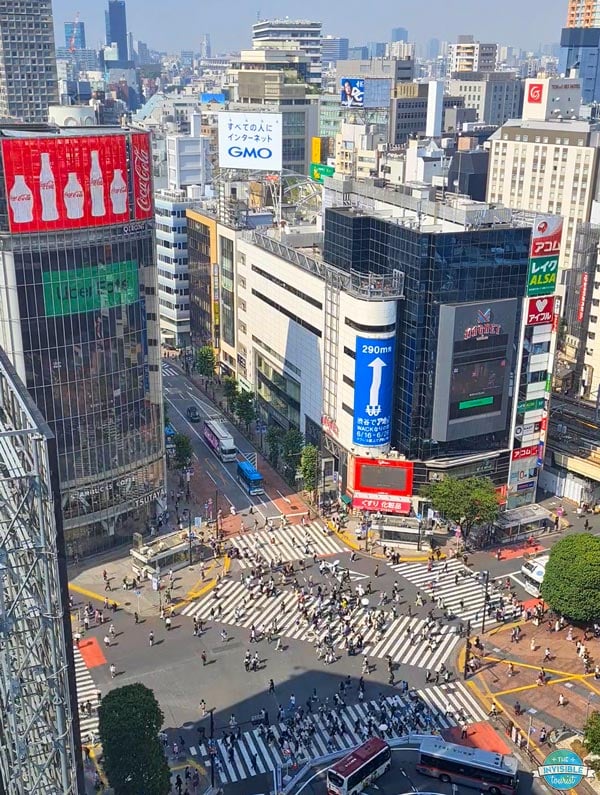
Unreal & unique things to do in Shibuya during the day
Be left in awe at Shibuya Sky
The glistening gem in the area’s crown, Shibuya Sky is the one of the top things to do in Shibuya, if not THE top — literally and figuratively!
Towering 237 metres above Shibuya Station, the Shibuya Sky observatory is located on the rooftop of the shiny Shibuya Scramble Square building and is one of the most popular Tokyo attractions. In my opinion, it has the best views over greater Tokyo in the entire city as it’s the highest outdoor observatory in Japan.
While you can certainly see the city from above at the SkyTree and Tokyo Tower observatories, you can’t see them when you are on them – making Shibuya Sky the ideal place to spend a few hours with iconic Japanese landmarks as a backdrop.
Albeit an amazing attraction to visit during the day, there is no better place to be in Tokyo in the late afternoon than Shibuya Sky, with the chances of seeing the sun setting behind Mt Fuji a truly unforgettable experience.
TIP: Skip the queue and buy Shibuya Sky tickets in advance here. My detailed guide to visiting Shibuya Sky covers what you can and can’t bring, what not to do and more insider tips based on my mistakes to help you plan the perfect visit!
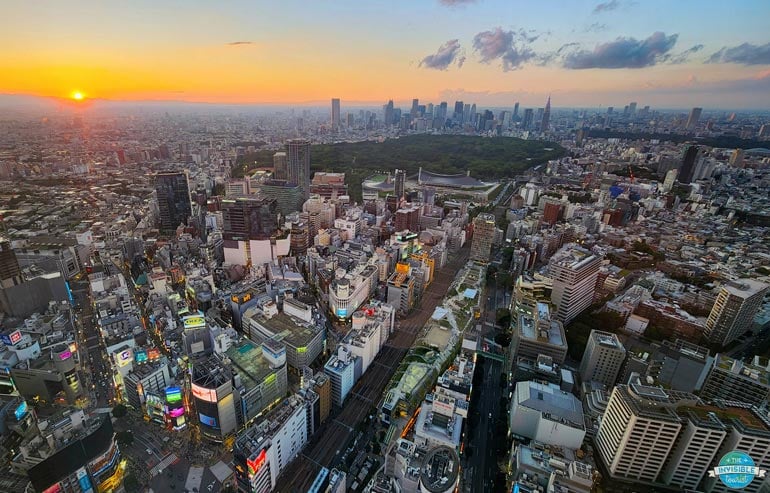

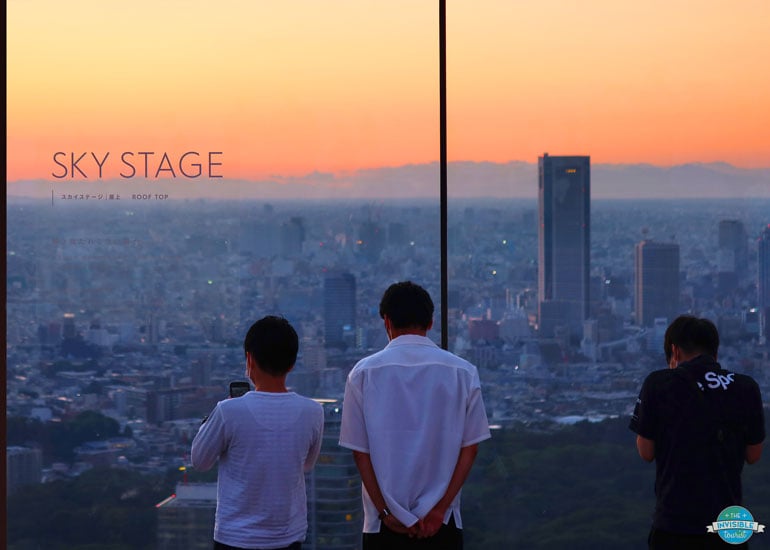
Spend some time exploring Shibuya Scramble Square
When coming back down from the Shibuya Sky observatory, take the time to explore the building it’s located in, Shibuya Scramble Square.
Wondering where to go in Shibuya for a quick bite? This building is home to over 200 shops and restaurants, with something to suit every taste.
Its height of 47 floors makes the Shibuya Scramble Square building a great landmark to use to navigate your way to Shibuya Station, considering it is located directly beside it.

Go on one (or many!) delicious food tours in Shibuya
Naturally, gobbling your way around hidden eateries, izakaya and bars is one of the most fun things to do in Shibuya!
Over the years I’ve personally enjoyed several food tours in Tokyo with friendly local guides, they are always so much fun and a great way to meet fellow travellers. The best part is your guide will take care of all the ordering so you don’t have to!
I love these tours because they give me confidence to try new things I would probably never have otherwise, such as flounder and eel – delicious!

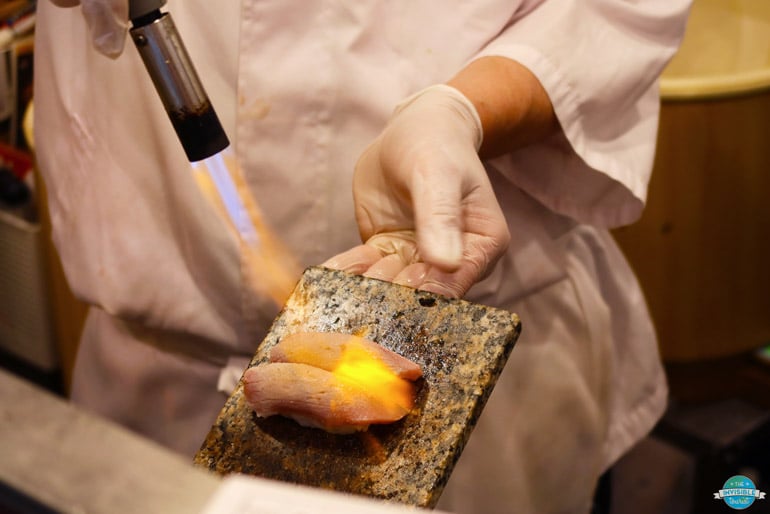

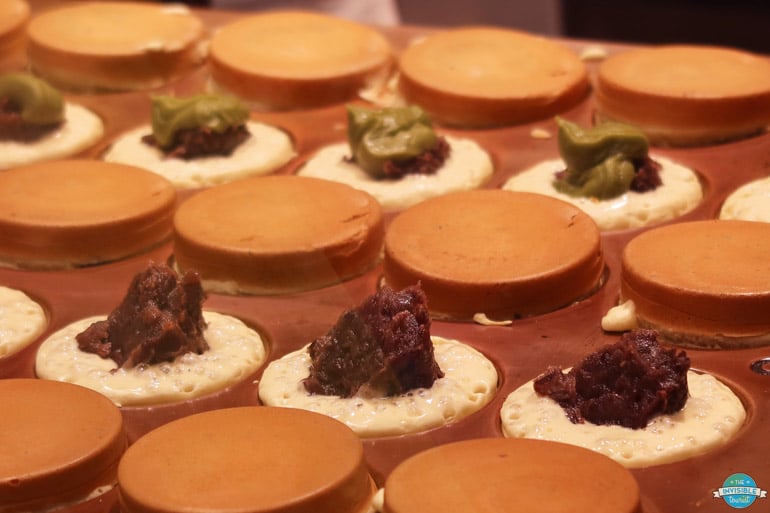
Brave the Shibuya Crossing
With transport passes clicking through the turnstiles, a wave of excitement washed over me when I first stepped through the Hachiko Exit of Shibuya Station. This was it, I’d finally reached Shibuya Crossing!
Donning the award for world’s busiest pedestrian crossing, Shibuya Crossing or “The Scramble” has around 3,000 people crossing it at any one time. Seeing it is a very “I’m in Tokyo!” moment.
Some think it’s overrated, but it is a must do in Shibuya. There are a number of places to see the scale of Shibuya Scramble Crossing from above, these locations are great spots to spend time people-watching.
Where to see Shibuya Crossing from above
Most articles will tell you to head to Starbucks in the TSUYATA building directly on the crossing. However, why spend your time battling against every other tourist for a glimpse when you can “be invisible” at plenty of lesser-known places?
- Shibuya Excel Hotel Tokyu – The rooms are my personal favourite and I recommend this hotel as one of many in my Tokyo accommodation guide
- Mag’s Park beside the Magnet Building – The back rooftop terrace
- On top of Shibuya Sky Observation Deck – Mentioned above
- Opposite the Myth of Tomorrow mural (more on this down the page)
- Shibuya Hikarie Building – The best spot to also see the new Akita Inu pup on 3D TV
- L’Occitane Café – Upmarket café setting for paying customers.
NOTE: Take notice of the TV billboards and you’ll see they are synchronised – the Akita Inu jumps from one TV to the next! There is also a giant 3D panda in Shibuya Centre Gai.
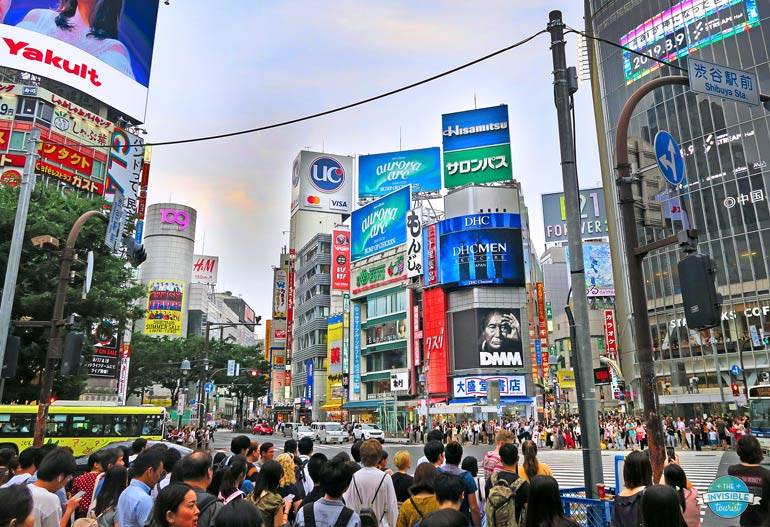

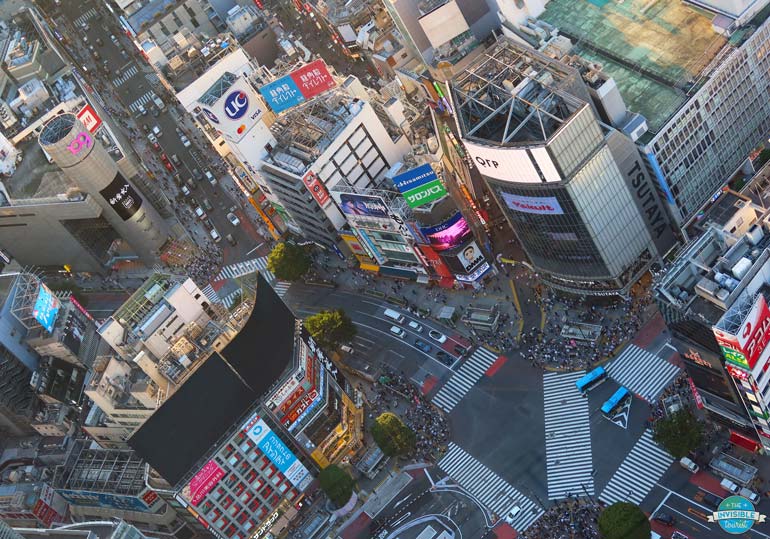

Admire the shiny new Miyashita Park
Originally built in the 1930’s then repurposed for the 1964 Tokyo Olympics, Miyashita Park 宮下公園 has changed its face many times throughout the decades.
Most recently, it reopened in July 2020 having undergone extensive refurbishment to bring the complex into the 21st century.
A cross between shopping haven, restaurant locale and more, Miyashita Park’s leafy green rooftop area is worth a visit if you’re looking to relax in the bustling Shibuya neighbourhood.
I personally loved the indoor recreation of a yokocho – laneway of eateries – called Shibuya Yokocho. More on these down the page.
TIP: Can you find the “new” Hachiko meeting point in the photo below?


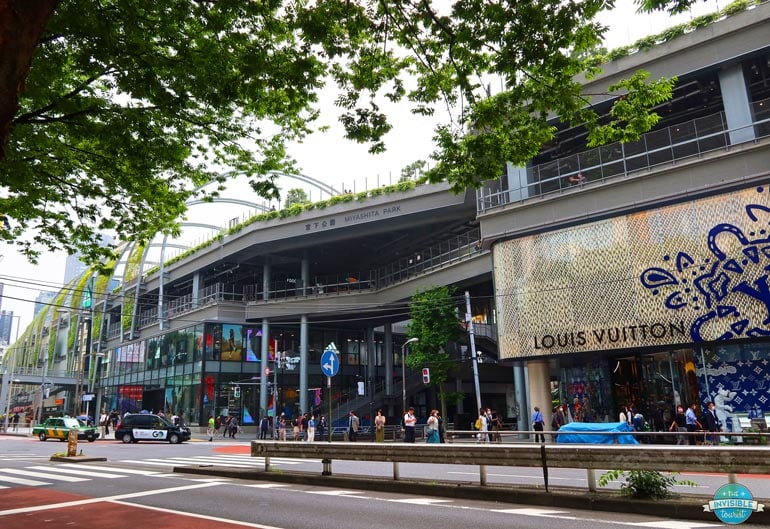
Give the Hachiko Statue a pat on his head
Tokyo’s most beloved dog, Hachiko, has been immortalised in this bronze statue just outside Shibuya Station. Have you heard his story?
Known as Japan’s most loyal pet (hence his name Chūken Hachikō 忠犬ハチ公 in Japanese), the statue was made in memory of an Akita Inu dog who would patiently wait for his owner to return from work at Shibuya Station each day during the 1930’s.
Sadly, one day his owner passed away and didn’t return, but Hachiko continued to wait by the train station every day for years until he passed, too. That kind of loyalty is so heartwarming, isn’t it?
TIP: This is why the Hachiko Statue is now a favourite and popular meeting spot for tourists and locals in Shibuya, and he is affectionately referred to as Hachiko-san.
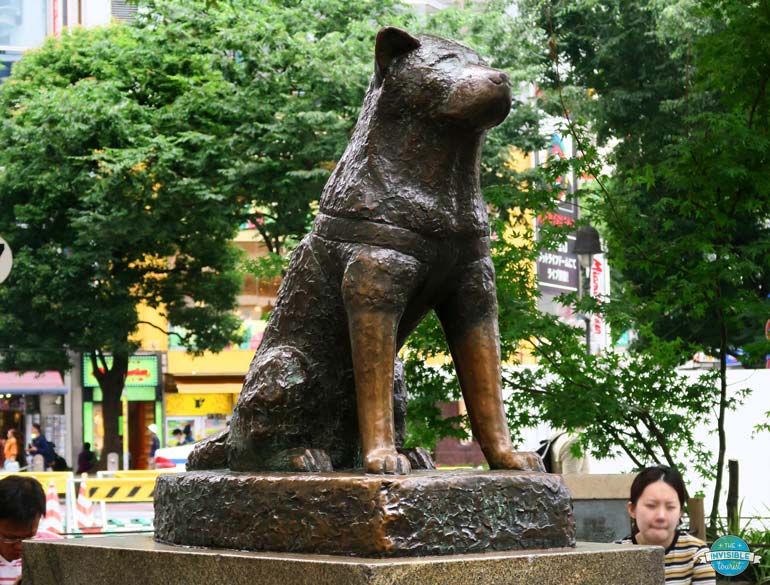
Enjoy a contrast of old Shibuya at Nonbei Yokocho
Their old wooden doors set amongst weeping willow trees, the small local bars in Shibuya along narrow Nonbei Yokocho are worth your time.
Referred to by locals as Drunkard’s Alley, this row of small bars and eateries dates back to the 1950’s.
This retro setting is one of the perfect places to go in Shibuya to enjoy chatting to locals in the evenings as the trains pass overhead on their way to and from Shibuya Station.


Be moved by the Myth of Tomorrow mural
Despite its enormous length, thousands upon thousands of people walk past this mural daily without realising, it is hiding very well in plain sight.
Known by locals as Japan’s Guernica, the Myth of Tomorrow was created in 1969 and depicts the horror and destruction caused by allied nuclear blasts that devastated Hiroshima & Nagasaki during WWII.
Perhaps the most powerful image in this mural is the central skeleton overwhelmed by flames. If you look closely, you’ll also see miniature figures on fire in the background, too.
The Myth of Tomorrow has such a fascinating provenance, including being lost for decades in Mexico. It’s wonderful the mural was found and is now on display at the Shibuya Mark City walkway!

Explore an underground department store at Shibuya Mark City
I always like to say, Shibuya is one of the horizontal AND vertical neighbourhoods of Tokyo! Opposite Shibuya Station is an underground department store and dining area called Shibuya Mark City 渋谷マークシティ.
Shibuya Mark City is connected to JR Shibuya Station via the Shibuya Mark City walkway (which has great views over the crossing, too), Tokyo Metro and Keio train lines.
TIP: If you’re looking for unique things to do near Shibuya Crossing, I loved wandering through and window-shopping the phenomenally-priced fruits — you’ve never seen any so perfect!

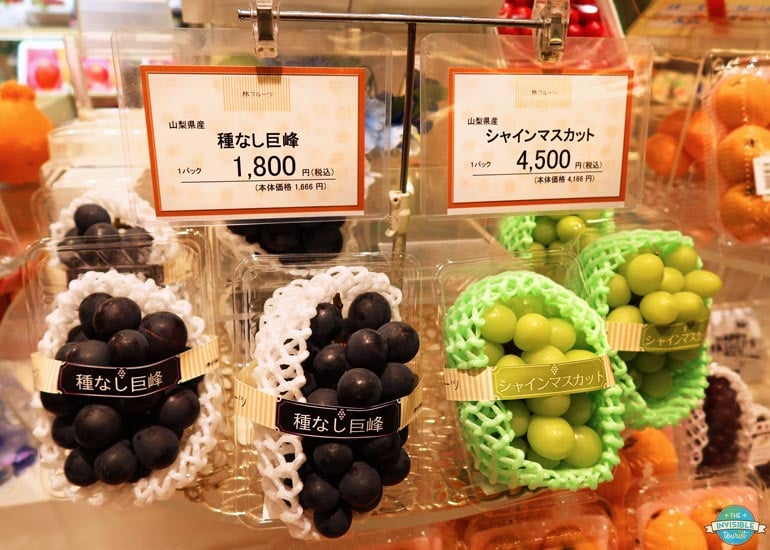
Shopping is one of the best things to do in Shibuya
Love shopping up a storm? Shibuya is for you! As mentioned earlier, the brand new Miyashita Park complex is full of shops bursting with mid-range to luxury stores.
The cylinder-shaped Shibuya 109 building directly opposite Shibuya Crossing is one of the oldest clothing stores in Tokyo and is packed with trendy fashion. Shibuya MODI is another popular shopping mall, Shibuya Parco has many stores with a focus on arty fashion.
Shibuya Loft and its seven floors are filled with variety items such as stationery, accessories, homewares, kitchen utensils – much like Daiso. For beauty? Head to Shibuya Centre Gai for some of your favourite brands.
And if you like nostalgia with your music? Head to Tower Records to experience a time before music streaming services and find CDs, DVDs, box sets and more.
Fancy second-hand items? Tokyu Hands, Don Don on Wednesday and 2nd Street stores are just some of the options.
TIP: Even beneath Shibuya Crossing itself is an underground maze of stores at Shibuchika!

Window shop along Omotesando
Colloquially known as Tokyo’s answer to New York’s Park Avenue, the tree-lined street of Omotensando is where you’ll find luxury stores such as Gucci, Céline, Givenchy, Yves Saint Laurent, Dior and more.
At the northern end of Omotesando before reaching Harajuku Station is Tokyu Plaza, famed for its geometric mirrored entrance which is popular on social media.
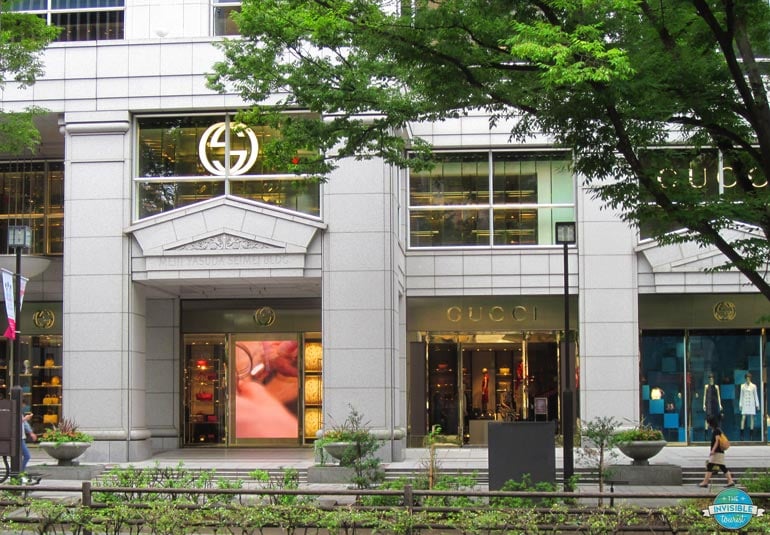
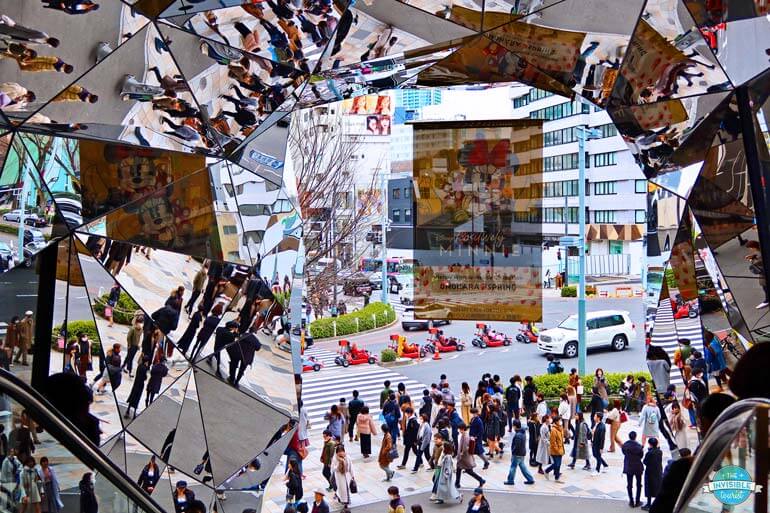
Check out the largest Don Quijote store in Tokyo
With huge tanks of fish flanking its main doorway, Mega Don Quijote Shibuya is its flagship store and the largest in Tokyo.
Affectionately known as Donki ドンキ by locals, this store has seven floors of clothing, accessories, homewares, sporting goods, tools, jewellery, electronics, adult toys and more. It even features pre-loved luxury designer goods if you love a good rummage.
TIP: Don Quijote is the best place to buy ALL the flavoured Kit-Kats as omiyage (souvenirs from Japan to give as gifts)!

Pay a visit to the beloved Meiji Shrine
Completed in 1921 as a dedication to Emperor Meiji and his wife, Empress Shoken, for their work during the Meiji Restoration, Meiji Shrine 明治神宮 (Meiji-jingu) is Tokyo’s major Shinto shrine.
Nestled within 100,000 trees donated from all over Japan, its forested grounds are a lovely place to escape the hustle and bustle of Shibuya.
A huge wooden torii gate greets visitors at its main entrance behind Harajuku Station, the cool leafy pathway is a welcome respite from summer heat. Along the main path are rows of huge sake barrels, left as offerings to the gods enshrined.
The shrine grounds also feature an iris garden that bursts into purple hues throughout late June/early July. A gift from the Emperor to his Empress, the iris gardens attract a small fee to enter, however the shrine itself is free to visit.
TIP: During the summer months, there can be small biting bugs in the forest surrounding the shrine, so you may wish to wear insect repellent.



Leisurely stroll around Yoyogi Park
A popular spot to see the yellow gingko trees of autumn and early-blooming cherry blossoms in spring, Yoyogi Park 代々木公園 is a great little add-on when visiting the adjacent Meiji Shrine in the Shibuya district.
Featuring sprawling lawns and a large pond, Yoyogi park is a lovely spot for picnics in the centre of Shibuya city.
On Sundays, it’s popular with locals who gather to watch local music artists perform as well as different kinds of hobby groups.
TIP: The Rockabillies are perhaps the most well-known performers, donning all-denim and dancing to rock music!
Don’t miss Sakuragaokacho during the cherry blossom season
Lined on both sides with dense cherry blossom trees, Sakuragaokachō 桜丘町 (also Sakura-dori or Sakura Street) in Shibuya is one of the best streets for photographers during the spring.
For 100 metres, the tree branches almost touch each other from one side of the street to the other, creating a beautiful archway of pink petals.
The street itself is packed with bars and eateries, with the nearby pedestrian bridge above allowing for the best views over the trees.
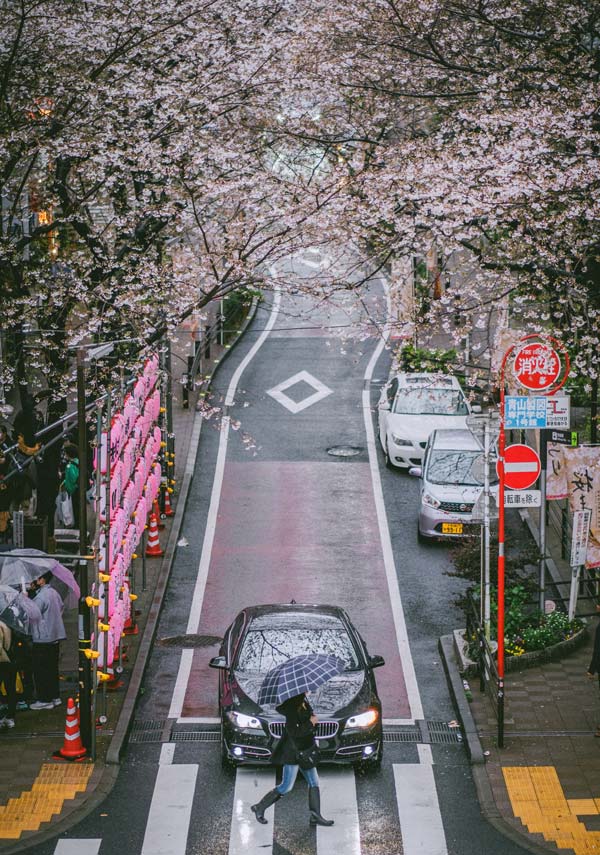
Fully appreciate some of Japan’s finest wagyu beef
Would you like me to let you in on a little secret? My regular readers know how much I LOVE wagyu beef, I have tried it in many places around the world and back home… but there is one place in my mind that tops them all.
Han no Daidokoro is a yakiniku style restaurant (Japanese BBQ) in Shibuya I’ve visited several times and adore. With a small grill in the middle of each table, beef is cut into small slices and you can cook the steaks yourself.
It’s an enjoyable social and culinary experience (even if you usually travel solo as I do). Their selection of wagyu from all over Japan is nothing short of AMAZING! From Kobe to Yamagata, Tajima to Omi, the wagyu on offer is of varying grades (including A5+). They have English menus, too.
My highest recommendation for the type of wagyu to order is harami. It will absolutely melt in your mouth and the flavour will blow you away. If you love wagyu, you don’t want to miss this place!

Exciting and fun things to do in Shibuya at night
Enjoying Shibuya during the day is one thing, but there is a whole new world to discover at night!
Join in a night bar hopping tour
Bar hopping around Shibuya at night with a local guide is crazy fun! Having the opportunity to visit hidden bars that only locals know about and chat with them is one most fun nights I’ve ever had in Tokyo.
For all the details, read my bar hopping Shibuya at night review. If you also hope to learn all about sake and local pub culture, book your own Shibuya bar hopping tour here.
Prefer not to go bar hopping, but want to join a night foodie tour around Shibuya? Try this Shibuya retro food tour or this Shibuya street food tour instead.
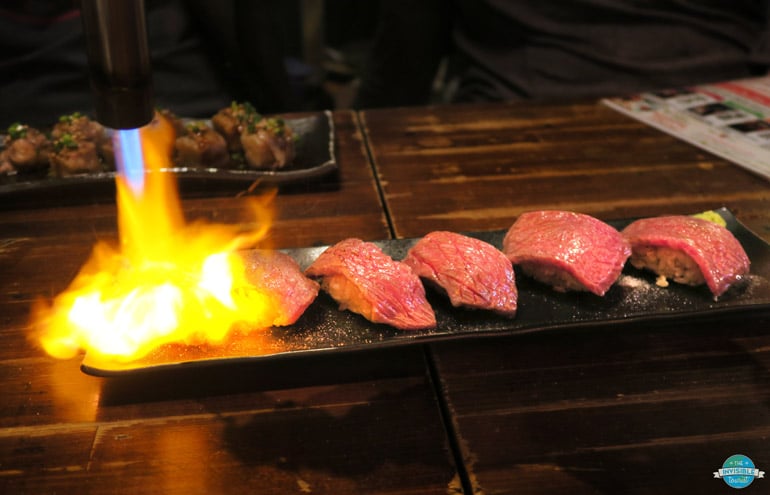

Marvel at the neon lights of Shibuya Center Gai
Shibuya Centre Gai センター街 is where you’ll find countless, colourful and vertical neon signs lighting up the night skies.
Similar in appearance to Kabukicho in Shinjuku, this area comes alive at night! You’ll find plenty of nightclubs, fast food joints and fashion brand stores in this compact area.
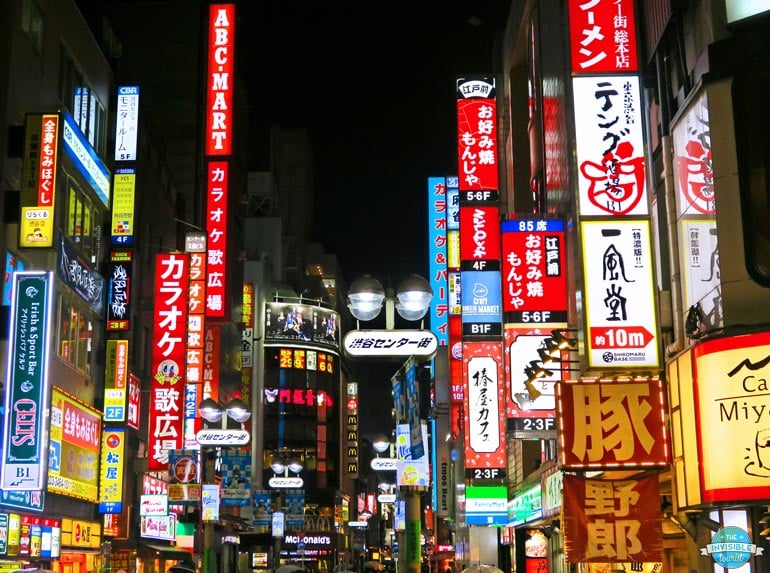
Find quirky hotels on Love Hotel Hill
Have you heard of Japanese love hotels? These quirky, unique and sometimes bizarre hotels are popular with local couples who desire some privacy!
Fancy a gym-themed hotel? Or perhaps one made of sweets akin to Hansel and Gretel? The rooms inside Love Hotels in Japan follow random themes and could be a fun place to spend a few hours, or even the night.
Follow the narrow, winding laneways in Shibuya’s Dōgenzaka area to find a hotel decorated in sweets, but be careful – the tree randomly speaks in English and will scare the heck out of you if you’re not prepared (I learnt this the hard way)!

Down a few drinks in a Church Bar
Set in an actual old church in the Dōgenzaka area, I briefly walked past this cool bar on the way to a meeting.
Its stained glass windows are a stunning feature at night while music floats onto the street through its arched wooden doors. Definitely worth checking out!
Sing your heart out at a karaoke bar
It’s only fitting that you try karaoke カラオケ in Japan, seeing as it was invented here. It is a big thing that locals really enjoy – so much so, it can be taken quite seriously!
There are many karaoke bars dotted all throughout Shibuya such as Big Echo, Joy Sound, Karaokekan, Rainbow Karaoke and more.
Hire one of the private rooms for a few hours, order some drinks, turn the lights out, follow the English prompts and sing ‘til your heart’s content. Snacks can also be ordered from an iPad and staff will bring them in to you.
I personally love how Western music videos are redone with random people instead of showing the actual ones. Always a good laugh and so much fun!
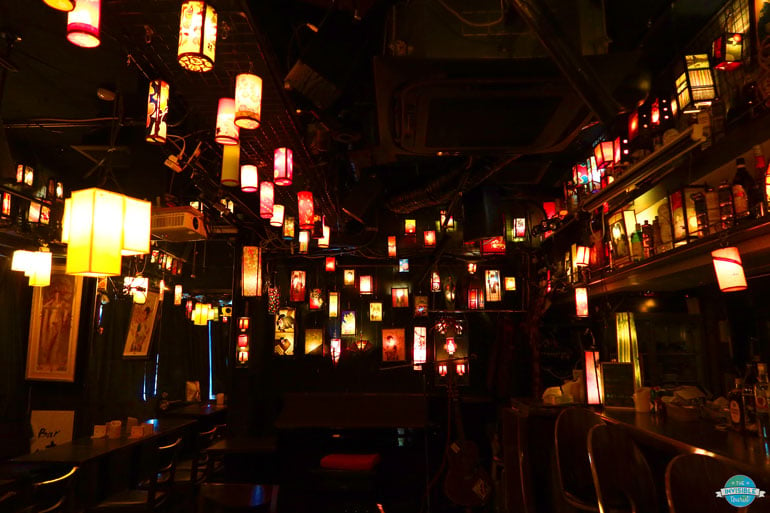
Have a go playing pachinko
Do you enjoy a bit of a gamble? You’ll likely enjoy Japan’s favourite game, pachinko パチンコ! There are dozens of parlours dotted throughout Shibuya, and they are always easy to find because music blasts through their doors.
Seeing as gambling for cash is illegal in Japan, pachinko is an interesting way around it, despite the parlours seeming like Western casinos.
The low-stakes slot machines do not reward winnings in cash, but in special tokens that can be exchanged for prizes. These prizes can then be sold for cash at a special vendor usually around the corner.
Enjoy dinner at an izakaya along Miyashita Park
You’ve seen it in the daytime, but how about heading back for a meal at Miyashita Park at night?
The modern laneway is lit up beautifully with lovely old lanterns to add a traditional contrast.
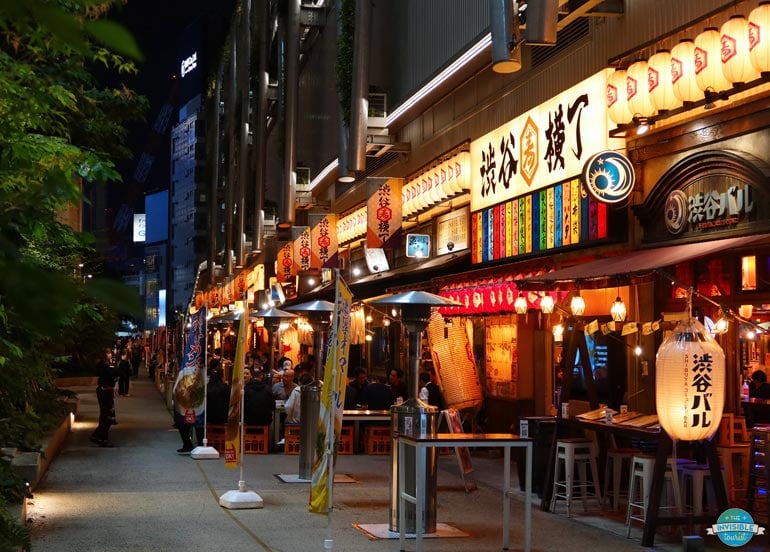
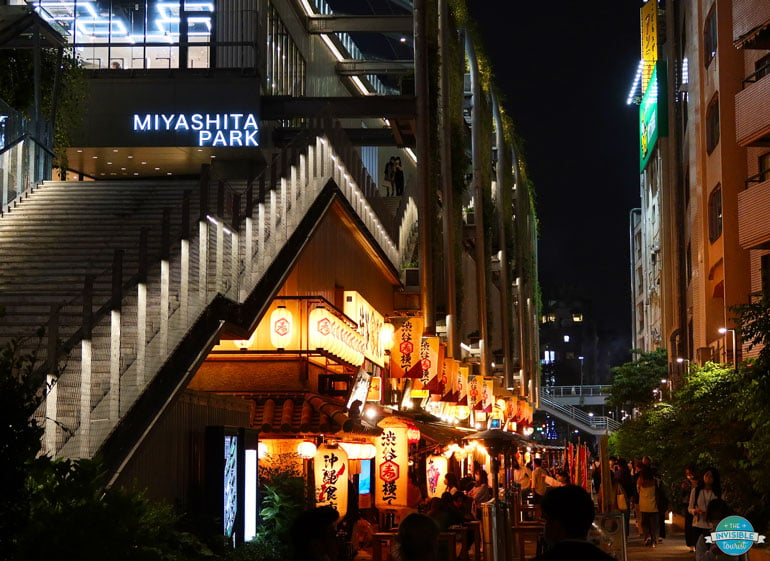
Head back to the Scramble Crossing to enjoy it at night
Sure, Shibuya Crossing is a sensory overload during the day. But be sure to head back at night to see it all illuminated!
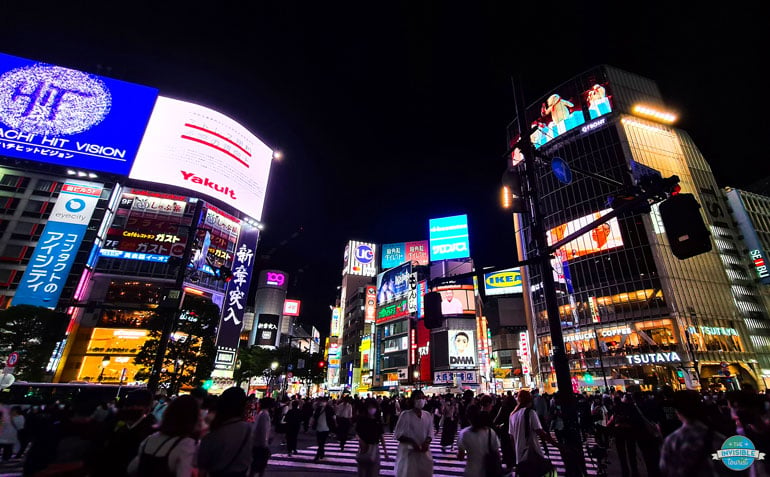
Kick back and relax in Shibuya from your hotel room overlooking the Scramble Crossing
What to do in Shibuya Tokyo if you’re wanting to put your feet up one evening instead of partying on?
One of my personal favourite things is to grab chuhai チューハイ and snacks from a nearby konbini コンビニ (convenience store), sit by my hotel window and just watch the night world around me.
Trust me, this view never gets old. Ahh, what a way to end the day!
TIP: If you’d like a room overlooking the crossing, remember to ask for a corner room at Shibuya Excel Hotel Tokyu. They do cost more than a regular room, however. If not, the views over Shibuya from any room here are fantastic.

Concluding these exciting things to do in Shibuya Tokyo
This concludes my comprehensive guide to Shibuya things to do! From incredible views over the city to foodie tours, shopping to shrines, now you know what kinds of things there are to do around Shibuya during both the day and night.
Which of these things to do in Shibuya Japan do you most want to experience? Let me know what you’ll add to your Shibuya itinerary in the comments below.
Need some inspiration for a Japan itinerary? Be sure to head over to my popular Japan blog for my tried-and-tested 2 week itinerary, 3 week itinerary, etiquette do’s and don’ts, cultural experiences, meaningful Japanese souvenirs, what to pack for Japan, my guide to useful Japanese phrases for tourists (including FREE cheat sheet!) and a whole lot more to help you better “blend in” in Japan!
If you found this helpful please share it or save for later, and come and join me on Facebook, Instagram, YouTube, Pinterest and TikTok for more Japan inspiration!
Until next time,

Like it? Pin it! 📌
![27 Unreal & Best Things to do in Shibuya [Day + Night] | The Invisible Tourist](https://www.theinvisibletourist.com/wp-content/uploads/2022/10/best-things-to-do-in-shibuya-tokyo-pin2.jpg)
This guide to what to do in Shibuya contains some affiliate links. I may earn a small commission if you decide to make a purchase and if you do, thanks for your support! This helps with the costs of running my blog so I can keep my content free for you. As always, I only recommend a product or service that I genuinely love and use myself!


Hi Alyse,
Thank you for your comprehensive run down of Shibuya. I am working through all your Japan content in preparation for our trip, which is taking me some time (and many cups of tea!) so I can only imagine how much work you put in preparing these pages – so thank you!
My husband and I will be first-timers to Japan and are both vegetarian. To be honest, finding food we can/will eat is worrying me more than anything else!!! Are there a few vegetarian dishes you could recommend we keep an eye out for, or some staple veggie items we could look for in the konbini if we find ourselves in a pinch?
Many thanks and all the best,
Kayleigh
Hi Kayleigh! Thanks for your kind words, I’m glad you are enjoying reading through my blog with multiple cups of tea – the best way to do it!
While I’m not a specialist in vegetarian food, I do know many vegetarian travellers find the Happy Cow app super helpful to find vegan or vegetarian restaurants in Japan.
Just note that it’s common for typical Japanese sauces to contain dashi (fish flakes) so you may wish to avoid dishes containing it.
Dishes to keep an eye our for:
• Tofu dishes
• Noodle dishes with mushrooms
• Vegetable tempura
• Meat-free okonomiyaki (savoury pancake with vegetables & noodles)
• Japanese vegetable curry
• Pickled vegetables
• Some street food stalls sell whole roasted sweet potatoes
• If you’re up for it, you can try this vegetarian foodie tour around Shibuya!
In addition to the konbini everywhere, there are also “Natural Lawson” konbini that focus on healthier options and those that have special dietary needs.
In konbini, you can try:
• Hot pizza buns- like dumplings but with cheese/tomato filling on the inside – one of my personal favourites!)
• Egg salad sandwiches – the best you’ll have anywhere)
• Onigiri – triangle-shaped rice snack with seaweed and different fillings
• Vegetable croquettes and hash browns
• Fruit jellies
This is a great resource for reading food labels in konbini.
From feedback I’ve received from vegetarians, it’s much easier to find food in Japan than it is for vegans. I hope that helps and thanks so much for reading!
Hi Alyse,
Thank you so much for taking the time to reply to me, and for your very detailed response. My husband is a big eater so I was envisaging some fraught hangry episodes if we couldn’t find any veggie sustenance to fuel out adventures!! However, you’ve really helped put my mind at rest that we will be able to find things, and also that we can still enjoy some traditional Japanese cooking and flavours without eating meat.
Thank you so much! 🙂
Kayleigh
I’m so glad to hear that, Kayleigh!
I call Japan “The Land of Convenience” and you’ll see why very soon 😃
Enjoy your adventures and all the yummy food!